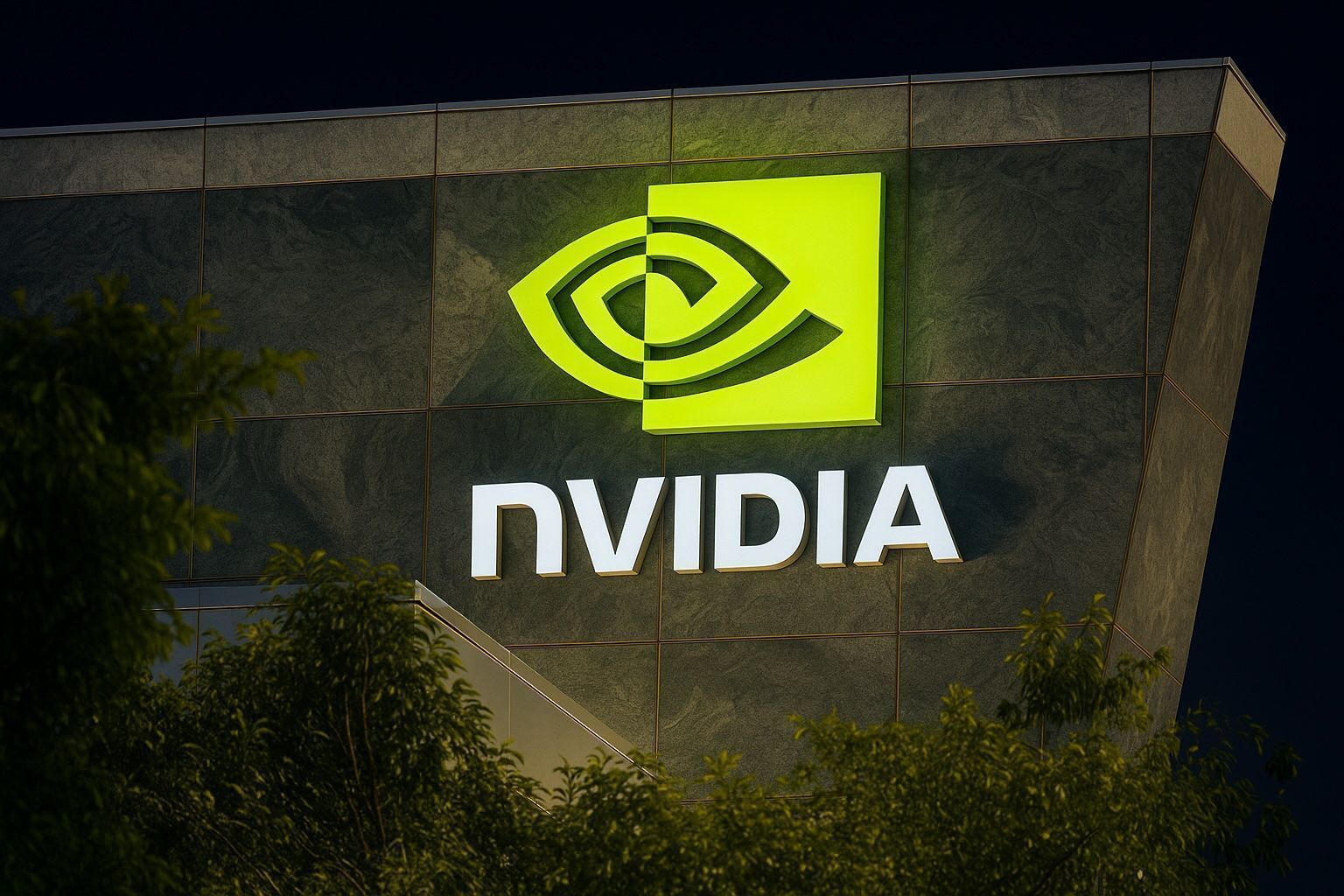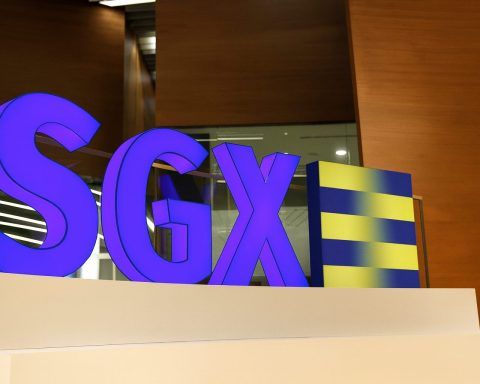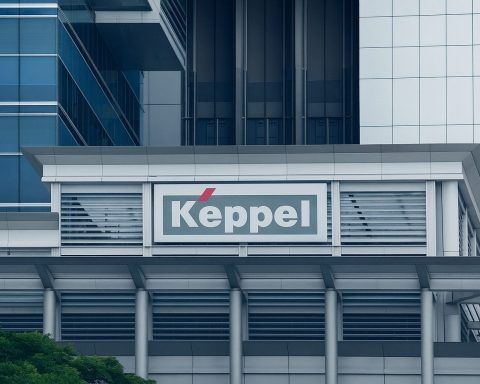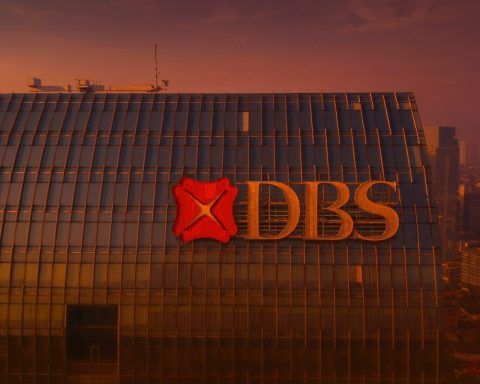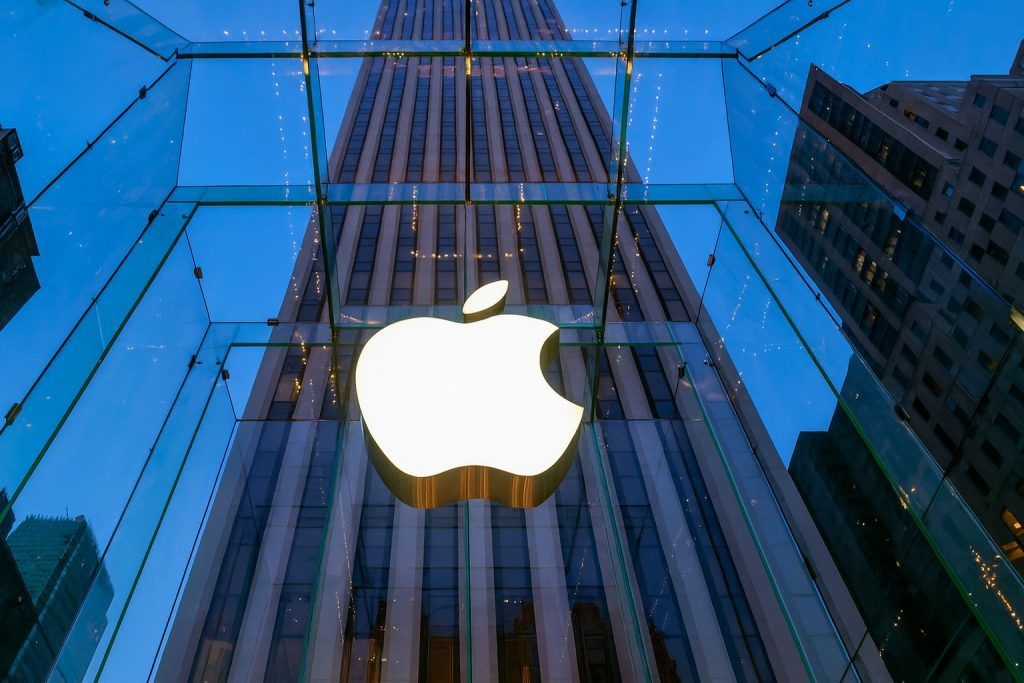Note: All market data in this article refers to the U.S. session on Tuesday, November 18, 2025.
Key Takeaways for Nvidia Stock on November 18, 2025
- Price action: Nvidia (NASDAQ: NVDA) closed around $181.36, down roughly 2.8% on the day after trading between about $179.65 and $184.80, with more than 200 million shares changing hands. [1]
- Momentum: The stock is still up about 38% year to date, but has fallen roughly 8–10% in November and is around 10% below its October record high near $212. [2]
- Macro backdrop: The S&P 500, Dow and Nasdaq all fell for a fourth straight session, dragged down by an AI‑driven tech sell‑off and fading hopes for imminent Federal Reserve rate cuts. [3]
- Earnings set‑up: Options markets are pricing in about a 7% post‑earnings move in either direction, implying a potential $320 billion swing in Nvidia’s roughly $4.5 trillion market value when it reports Q3 FY2026 results after the close on Wednesday, November 19. [4]
- AI mega‑deal: Nvidia and Microsoft unveiled a major tie‑up with Anthropic: Anthropic will spend $30 billion on Azure compute powered by Nvidia chips, while Nvidia commits up to $10 billion and Microsoft up to $5 billion in new investment, plus a gigawatt‑scale hardware roadmap using Nvidia’s Grace Blackwell and Vera Rubin systems. [5]
- Bubble debate: The Anthropic deal and a flurry of other large AI commitments are deepening concerns about “circular” AI revenue and a possible AI bubble, even as Nvidia remains the main beneficiary of AI data‑center spending. [6]
- Street view: Despite recent volatility, Wall Street remains overwhelmingly bullish, with most analysts rating NVDA a Buy/Outperform and average price targets clustered around the $220–$240 range, implying double‑digit upside from current levels. [7]
Nvidia Stock Today: Price Action and Valuation
Nvidia shares extended their November pullback on Tuesday, closing near $181.36, down about 2.8% for the session. Intraday, NVDA traded roughly between $179.65 and $184.80, with estimated volume above 200 million shares, underscoring intense positioning ahead of earnings. [8]
Over a longer horizon, the picture is still extremely strong: Nvidia is up around 38% in 2025, capping a run that has seen the stock surge more than 1,200% over the past three years on the back of AI‑chip demand. [9]But that rally has cooled. Since peaking near $212 in late October when Nvidia briefly became the first public company valued at $5 trillion, the stock has slipped nearly 10%, and about 8% just in November. [10]
How expensive is Nvidia now?
Valuation is at the heart of the AI bubble debate:
- Trailing P/E: Estimates put Nvidia’s current price‑to‑earnings ratio in the low‑ to mid‑50s, far above the broader market. [11]
- Forward P/E: Depending on the data source and earnings forecasts, Nvidia’s forward P/E is generally seen in the high‑20s to low‑30s—rich, but not wildly out of line with other hyper‑growth tech leaders. [12]
Some valuation models are downright skeptical. One widely‑cited fair‑value estimate using a Peter Lynch–style formula pegs Nvidia’s intrinsic value at about $89 per share, implying more than 50% downside from Tuesday’s close—though that model assumes much slower long‑term growth than most Wall Street forecasts. [13]
In short: Nvidia is priced for very strong, sustained AI growth. Any sign that growth is normalizing rather than compounding relentlessly is likely to trigger sharp moves in the stock.
AI Bubble Fears Drag Tech and Nvidia Lower
Tuesday’s sell‑off in Nvidia didn’t happen in isolation. U.S. stocks fell broadly, with the Dow down about 1.1%, the S&P 500 off 0.8%, and the Nasdaq lower by roughly 1.2%, marking a fourth consecutive day of losses. [14]
Several themes hit risk appetite at once:
- AI valuation worries: Commentators increasingly compare today’s AI enthusiasm to the dot‑com era. Concerns center on whether spending on AI infrastructure—data centers, chips, and cloud contracts—can be monetized quickly enough to justify trillion‑dollar valuations. Nvidia sits right at the center of that debate. [15]
- Fed uncertainty: Odds of another Federal Reserve rate cut in December have dropped sharply in recent weeks, keeping pressure on long‑duration growth stocks like Nvidia. [16]
- Crypto and risk assets wobble: Bitcoin fell below $90,000 before partially rebounding, another sign that investors are trimming risk across the board, not just in AI. [17]
Within this context, Nvidia was one of the biggest drags on major indexes. Several live market commentaries noted that NVDA slid around 2.7–3% intraday, helping to lead a Big Tech sell‑off that also included Amazon and Microsoft. [18]
The Anthropic Mega‑Deal: Fuel for Growth or Sign of an AI Bubble?
One of the day’s most important headlines for Nvidia wasn’t about earnings at all—it was about Anthropic.
What was announced?
On Tuesday, Nvidia and Microsoft unveiled a sweeping partnership with AI startup Anthropic, the company behind the Claude family of models:
- $30 billion in compute: Anthropic will spend $30 billion on Microsoft’s Azure cloud, specifically on infrastructure powered by Nvidia hardware. [19]
- Up to $15 billion in new capital: As part of the tie‑up, Nvidia will invest up to $10 billion in Anthropic, while Microsoft will invest up to $5 billion, largely in Anthropic’s next funding round. [20]
- Gigawatt‑scale roadmap: Anthropic is also committing to up to 1 gigawatt of additional AI compute built on Nvidia’s new Grace Blackwell and Vera Rubin architectures, a build‑out industry executives estimate could cost $20–25 billion on its own. [21]
This deal helps make Anthropic’s Claude the first frontier model available across all three major hyperscale clouds, and ties Nvidia even more tightly into the AI ecosystem as both supplier and investor. [22]
Why are investors uneasy?
The Anthropic partnership dropped on the same day as a detailed Reuters piece dissecting Nvidia’s role in a network of “circular” AI deals, including:
- A $100 billion commitment to OpenAI, tied to large GPU purchase agreements.
- A multi‑billion‑dollar stake in CoreWeave plus agreements to buy its excess cloud capacity through 2032.
- The new Anthropic deal, where Nvidia provides both capital and the chips that Anthropic’s huge cloud contracts will use. [23]
Critics worry such arrangements can inflate reported demand and revenue across the AI stack, even if end‑user adoption lags behind. Supporters counter that massive upfront investment is necessary to build the infrastructure that will power the next decade of AI applications.
Either way, the timing—on the eve of Nvidia’s earnings—has thrown more spotlight on how much of the AI boom is being driven by real demand versus financial engineering.
Earnings Preview: Can Nvidia Justify the Hype?
Wednesday’s earnings report is widely described as the single most important corporate event of this earnings seasonfor global markets. [24]
What Wall Street expects
For Nvidia’s fiscal Q3 2026 (covering roughly late July through late October), here’s the setup:
- Company guidance: Nvidia previously guided revenue to about $54 billion ±2%, implying a range of $52.9–55.0 billion, with non‑GAAP gross margins near 73.5%. [25]
- Analyst consensus: Various analyst roundups (LSEG, FactSet, Bloomberg) center around $54.8–55.2 billion in revenue—i.e., toward the top of Nvidia’s own range, implying year‑on‑year growth of roughly 56–60%. [26]
- Earnings: Estimates cluster around $1.25–1.30 in adjusted EPS, depending on the source. [27]
- Data‑center dominance: Analysts expect about $49 billion of the quarter’s revenue to come from Nvidia’s data‑center segment—the core of its AI business. [28]
At the same time, Reuters notes that while Nvidia has beaten consensus in 12 straight quarters, the margin of outperformance is shrinking as the base gets larger and comparisons become tougher. [29]
Options market: a $320 billion coin flip
Options pricing is signaling extraordinary stakes:
- Contracts imply roughly a 7% move in NVDA shares after the results—either up or down. [30]
- At a market value of roughly $4.5–4.6 trillion, that’s around a $320 billion swing in market capitalization, which would be the largest post‑earnings value change for any company on record. [31]
- Because Nvidia now makes up about 8% of the S&P 500, strategists warn that a big move in NVDA could drag the entire index close to 2% in either direction by week’s end. [32]
In other words, even if you don’t own a single Nvidia share, there’s a good chance your index fund or retirement account will feel whatever happens on Wednesday night.
Bubble or Breakout? What the AI Trade Is Watching
Beyond the headline numbers, the market will be laser‑focused on several themes highlighted in recent analysis:
- Sustainability of AI demand
- Cloud giants are still pouring tens of billions into AI data centers, and Nvidia’s order book for advanced chips reportedly totals around $500 billion through 2026. [33]
- At the same time, surveys show more investors now fear overinvestment in AI infrastructure than at any time since the mid‑2000s. [34]
- Margins under pressure
- Nvidia is rolling out increasingly complex systems that bundle GPUs, CPUs, networking gear and cooling into integrated racks, while ramping its flagship Blackwell architecture and preparing Rubin for 2026. That complexity, plus supply bottlenecks in advanced packaging, is expected to shave about 2 percentage points off gross margins versus last year, even as net income still surges. [35]
- China and export controls
- U.S. rules prevent Nvidia from selling its most powerful chips into China. The company stripped China from its advanced‑processor forecast last quarter, and CEO Jensen Huang has said there are currently “no active discussions” to sell Blackwell into that market despite speculation about customized variants. [36]
- Quality of AI revenues
- Deals with OpenAI, Anthropic, CoreWeave and other hyperscalers are enormous—but investors will be watching for clarity on how much of that demand is locked in, profitable and sustainable, versus being driven by one‑off incentives or reciprocal investments. [37]
Wall Street vs. the Skeptics: Who’s Right on Nvidia?
Despite the recent sell‑off and persistent bubble chatter, Wall Street remains overwhelmingly positive on Nvidia:
- Bloomberg data show more than 70 analysts rate the stock a Buy or equivalent, with only a small minority sitting at Hold and virtually no major firms calling it a Sell. [38]
- A Yahoo/Visible Alpha roundup pegs the average price target near the mid‑$230s, implying roughly 30% upsidefrom Tuesday’s close. [39]
- A 24/7 Wall St forecast pegs a year‑end 2025 target of about $233, assuming a P/E around 50 on projected EPS, again implying mid‑20% upside. [40]
- Other reports highlight aggressive targets: Citi, Oppenheimer, Bank of America and others cluster between $220 and $270, citing Nvidia’s product roadmap and dominant AI market share. [41]
Yet some big‑name investors are moving the other way:
- Peter Thiel’s hedge fund sold its entire Nvidia stake (more than 500,000 shares), contributing to a sharp one‑day drop after the sale became public. [42]
- SoftBank has also exited its Nvidia position, reallocating capital toward other AI bets. [43]
- “Big Short” investor Michael Burry has been betting against Nvidia, arguing that some big cloud providers are artificially boosting earnings by stretching the depreciation lives of AI hardware like Nvidia GPUs. [44]
An Axios analysis framed the current mood as “skeptical but still bullish”: Nvidia is roughly 10% off its highs, yet most Street forecasts out to 2026 still assume robust revenue and earnings growth, not a collapse. [45]
What Tuesday’s Move Means If You Hold Nvidia or AI Funds
Nothing here is financial advice, but it’s useful to understand how today’s setup might look from different angles.
For short‑term traders
- Volatility is the main story. With options implying a ±7% move after earnings, and recent history showing large post‑report swings, both longs and shorts face significant gap risk. [46]
- Key technical levels: Several technical analyses highlight the $180 area as a critical support zone; a decisive break below could open the door to a deeper retracement toward the $150 region, while a strong beat and bullish guidance could see a push back toward prior highs above $200. [47]
For long‑term investors
If you’re thinking years rather than days, the questions are more fundamental:
- Do you believe in the AI infrastructure super‑cycle?
Nvidia is arguably the purest large‑cap play on AI data‑center spending. If you think hyperscalers and enterprises will keep ramping AI capex for many years, Nvidia’s current valuation could still be justified. - Can competitors catch up?
AMD, Intel and custom in‑house chips at cloud providers are all vying for share. For now, Nvidia still dominates high‑end AI training and inference, but any sign of a structural erosion in that lead would be a big deal for the stock. - Are you comfortable with valuation risk?
A forward P/E in the high‑20s/low‑30s is not insane for a company growing revenue 50–60% year‑on‑year—but if growth decelerates, the multiple could compress quickly. [48] - Indirect exposure through index funds:
Because Nvidia is such a large part of the S&P 500 and Nasdaq‑100, many investors own it indirectly through ETFs and retirement plans. Even if you never touch NVDA directly, its earnings can still move your portfolio. [49]
Bottom Line for November 18, 2025
On Tuesday, Nvidia stock took another step back as markets wrestled with AI bubble fears, rich valuations and macro uncertainty, even while a massive new Anthropic partnership underscored just how central the company remains to the AI boom.
With the stock down nearly 3% on the day but nearly 40% higher year‑to‑date, and with options markets pointing to a potential $320 billion one‑day value swing, Wednesday’s earnings report is set to be a pivotal moment—not just for Nvidia shareholders, but for anyone exposed to the AI trade and the major U.S. equity indexes. [50]
If Nvidia’s results and outlook reinforce the narrative of durable AI demand, Tuesday’s dip could look like just another buying opportunity on a long uptrend. If they disappoint, the AI reset that traders have been whispering about all month may finally arrive in the open.
References
1. stockanalysis.com, 2. www.reuters.com, 3. apnews.com, 4. www.reuters.com, 5. www.reuters.com, 6. www.reuters.com, 7. www.investopedia.com, 8. stockanalysis.com, 9. www.reuters.com, 10. www.fastcompany.com, 11. www.macrotrends.net, 12. www.gurufocus.com, 13. valueinvesting.io, 14. apnews.com, 15. nypost.com, 16. nypost.com, 17. apnews.com, 18. finance.yahoo.com, 19. www.reuters.com, 20. www.reuters.com, 21. www.reuters.com, 22. www.businessinsider.com, 23. www.reuters.com, 24. www.morningstar.com, 25. www.fastcompany.com, 26. www.fastcompany.com, 27. www.investopedia.com, 28. www.businessinsider.com, 29. www.reuters.com, 30. www.reuters.com, 31. www.reuters.com, 32. www.reuters.com, 33. www.reuters.com, 34. www.barrons.com, 35. www.reuters.com, 36. www.reuters.com, 37. www.reuters.com, 38. www.axios.com, 39. finance.yahoo.com, 40. 247wallst.com, 41. 247wallst.com, 42. www.barrons.com, 43. www.reuters.com, 44. www.reuters.com, 45. www.axios.com, 46. www.reuters.com, 47. www.barrons.com, 48. www.gurufocus.com, 49. www.reuters.com, 50. www.reuters.com
